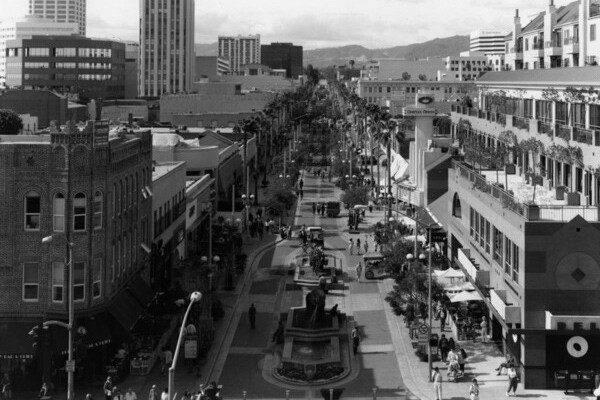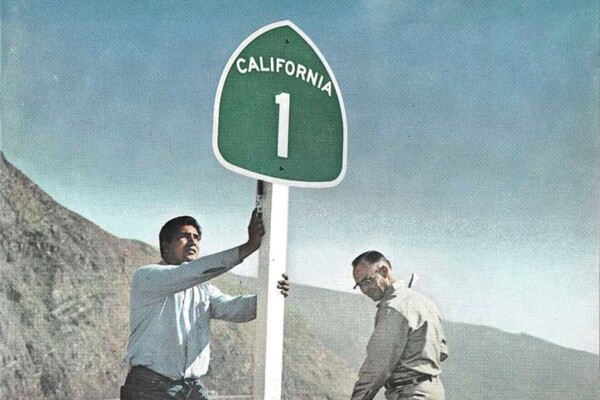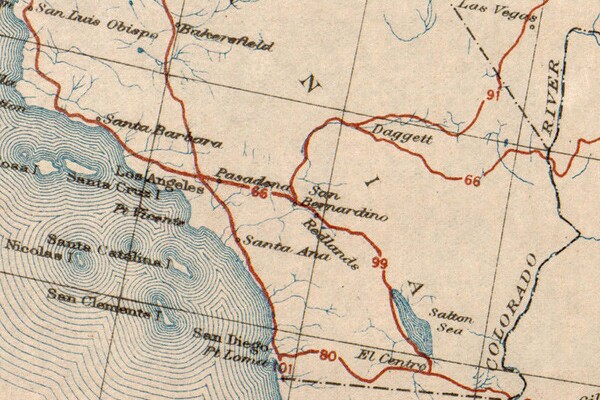Best of 2015: Los Angeles History

Postcard Collection, Department of Archives and Special Collections, William H. Hannon Library,
Loyola Marymount University.
This year saw exciting changes in Los Angeles, from the historic epicenter of downtown to its outer suburban reaches.
In downtown, the Broad, a new contemporary art museum, swung its doors open atop Bunker Hill, and the steel skeleton of the Wilshire Grand Tower, soon to be the tallest building in the city, crept into the neighborhood's iconic skyline. Stretching west from downtown, testing began for the Metro Expo Line extension, the first passenger train line on the Westside in half a century, expanding the county's tentacular public transportation system. And flowing throughout the city center and beyond, a new milestone in the ongoing efforts to revitalize the L.A. River was reached, as a $1.3 billion river habitat restoration plan was unanimously approved by the U.S. Army Corps of Engineers in Washington D.C.
Below, follow the links to our most popular history articles from 2015, and the stories that connect some of this year's milestones to the Southland's rich past. Plus, unearth the answer to one of the region's most peculiar questions: why do we say "the" before freeway numbers?
1) The 5, the 101, the 405: Why Southern Californians Love Saying 'the' Before Freeway Numbers

How did Southern Californians come to treat their highway route numbers as if they were proper names?
*Watch our introductory video to the topic.
2) How Santa Monica's Third Street Became a Promenade

The planned western terminus for the Expo Line extension is near the Third Street Promenade. Since 1965, the pedestrian rather than the automobile has reigned over this three-block stretch of downtown Santa Monica.
3) How Los Angeles Got a "Downtown"

Downtown continued to transform in 2015, yet it still resists easy definition and delineation. Perhaps we can trace the uncertainty surrounding downtown to the term's origins as a New York import.
4) Last House Standing on Bunker Hill

The Broad may be the newest addition to Bunker Hill today, but in 1969, bulldozers had cleared the mound of its Victorian mansions, with only one stubborn house remaining.
5) Elysian Park's Incredible Moving Mountain of 1937

The L.A. River grabbed a lot of attention this year, but in 1937, the river was the center of attention for a different reason: a landslide in slow motion -- 1.5 million tons of an Elysian Park hillside -- that was flowing into the riverbed.
6) When L.A. Was a Horse-Powered Town

Long before modern Metro rail operations, equine power propelled the streetcars and omnibuses of the city's first public transit lines.
7) What Does California's State Highway Shield Symbolize?

California's state highway markers point the state's roads towards a specific episode in the past: the California Gold Rush.
8) At First and Beverly, A Freeway Bridge Out of Nowhere

The First Street-Beverly Boulevard Viaduct is something of an infrastructural anomaly -- a 900-foot bridge better suited for a freeway interchange than an intersection of mere surface streets.
9) The Lost U.S. Highways of Southern California History

Our first interstate highway system once linked Southern California to the nation with concrete pavement and black-and-white shields.
10) When San Bernardino Was a Mormon Colony

In 1851, 437 Latter-day Saints set out from the Great Salt Lake City to establish a Mormon foothold in Southern California.